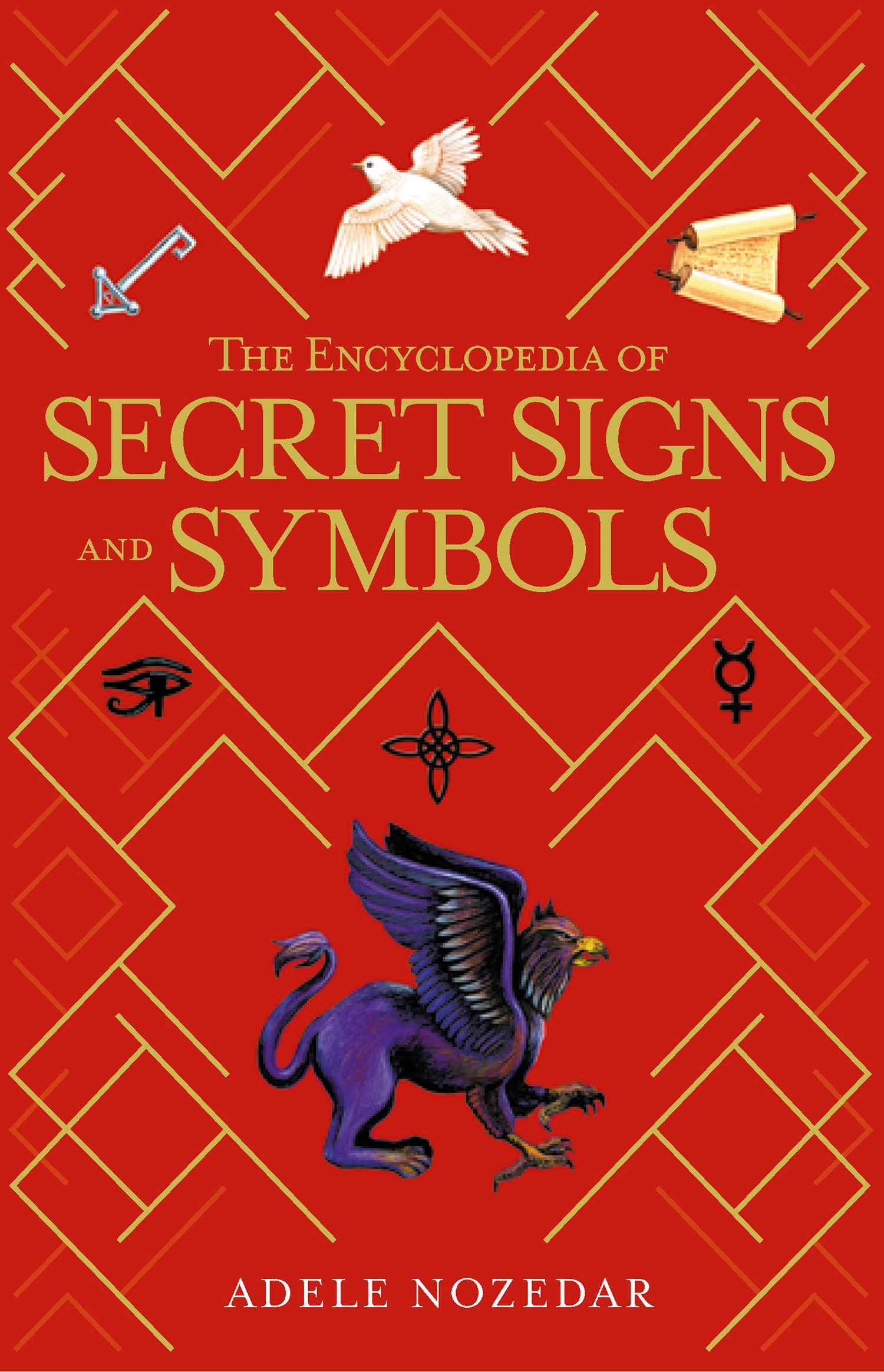By Christa Protano
One of the most popular books of our time may have been published twenty years ago, but its subject matter is still fascinating many of us today. The book? Dan Brown’s The DaVinci Code, which followed symbologist Robert Langdon on a fast-paced murder mystery throughout Europe, resulting in 80 million copies sold. The intriguing subject matter? The search for the Holy Grail. To solve the crime, Landgon uses his knowledge of secret symbols and ancient signs to track down a killer. Surprisingly, many of the signs and symbols featured in the book can be found right under our noses—objects we encounter during our everyday lives that we may not realize have a deeper meaning than what meets the eye.
In fact, there is a whole hidden world in which secret signs and sacred symbols play a pivotal role in shaping cultures, religions, societies, and more. And now that world is coming into the light thanks to The Encyclopedia of Secret Signs and Symbols. Author Adele Nozedar has put together an extensive reference guide of commonplace objects and their symbolic significance. Everything from colors, shapes, clothing, food, numbers, politics, animals (both mythical and IRL), plants, gemstones, sounds, ancient alphabets, body parts, rites and rituals are covered in this detailed book. Here is a preview of some of the everyday items we may take for granted and their alternative meanings.
Discover the meaning behind secret signs and symbols!
The Horseshoe
We’ll start with an easy one—the lucky horseshoe. Nozedar writes that this common animal need gained its symbolic significance because of its shape and metal used to make it. It is shaped like an arc, one of the first sacred symbols to represent the vault of the heavens. Flipped to resemble the crescent moon, the horseshoe invokes the protection of the moon goddess. The iron it is made from is a protective metal, which evil entities will go out of their way to avoid. This is why many people hang horseshoes over their doorway, resting on its curved end to hold its luck.


Pentagram
Perhaps the most widely known symbol, the pentagram holds meaning not only with pagan practice, but also Christian mysticism, the Kabbalah, tarot, Freemasonry, and more. Discovered around 6,000 years ago, this five-pointed star can represent, among other things, power, protection, healing, and higher knowledge depending on the way it is used and who is using it. Fun facts: the planet Venus, known as both the morning star and the Goddess, traces the shape of a pentagram in the sky over the course of four years and one day. Uniquely, writes Nozedar, it’s the only planet whose movements trace such a graphically recognizable symbol, a secret written in the sky.
Yin-Yang
Though the yin-yang symbol is Chinese in origin, it’s meaning has extended throughout the world. Nozedar explains that the shape represents the interaction and interplay of opposing forces: yin represents the female, the moon, coldness, passivity; while yang represents the male element, the sun, heat, and action. The dots (or bindhus) inside the S-shapes signify balance and harmony despite opposing forces.


United States Dollar Bill
Who knew that this little piece of green paper that once exchanged hands multiple times a day (prior to credit cards and Apple Pay) carries a plethora of ancient magical symbols that still resonate with the modern world? According to Nozedar, the most noticeable emblem, the Great Seal of the United States, takes the form of a pyramid and features the All Seeing Eye, representing God watching over all of humankind.
Also featured is the country’s official bird, the bald eagle, which is shown holding in its right talon an olive branch symbolizing peace, along with a bunch of arrows in its left claw showing its prepared to fight. Above the eagle is a crown of 13 stars representing the original 13 states. These stars combine to create another symbol—Solomon’s seal—a clever nod to the phrase “E Pluribus Unum” or “Out of many comes one,” referring to the many states that make up one Union.
Book
As publishers of reference books, classic literature, children’s books and more, we couldn’t resist including this otherwise ordinary object on our list. While a typical book may not seem to hold much significance, Nozedar claims that it is in fact a secret symbol. In tarot, a book symbolizes knowledge and hidden secrets, and in a wider sense the very universe itself. Nozedar also draws parallels between the book and the Tree of Life: like a tree, the book has “leaves” that represent individual ideas and, collectively, represent the sum total of all knowledge.

“This is a must-have reference book for anyone interested in symbology and the occult. Packed full of information on signs/symbols from around the world throughout recorded history. Not something most people would read cover to cover but great to flip through and explore or look up specific entries.”
—Will Bazan, Amazon Customer








